Stop Guessing: A Produce Pro’s Guide to Picking the Perfect Watermelon
I’ve spent a huge chunk of my life around produce, from dusty roadside farm stands to the perfectly polished floors of high-end grocery stores. And if there’s one thing I’ve learned, it’s that fruits and veggies have their own secret language. They tell you when they’re ready, but you have to know how to listen. Honestly, no fruit is more misunderstood than the watermelon.
In this article
- First, Understand the Golden Rule of Watermelons
- The Pro’s Inspection Method: More Than Just a Thump
- Busting a Common Watermelon Myth
- The Pro-Level Tie-Breaker
- Quick Cheat Sheet for the Store
- What About Pre-Cut Watermelon?
- When to Buy and What to Pay
- Bringing It Home: Storage and Safety
- Inspirational Gallery
People treat picking one like a lottery, a game of pure chance in the produce aisle. It’s not. It’s a skill, and it’s one my grandfather started teaching me when I was barely tall enough to hoist one onto my shoulder. He’d point out the little signs out in the fields, saying things like, “This one’s ready to come home,” or “Leave that one for the sun to finish its work.”
Those lessons were the foundation. Since then, I’ve probably handled tens of thousands of melons and trained dozens of new clerks. This isn’t just about a few cute tricks; it’s about understanding the fruit from the inside out. I’m going to walk you through the exact methods I use every day, so you can walk away with a sweet, juicy winner every single time.
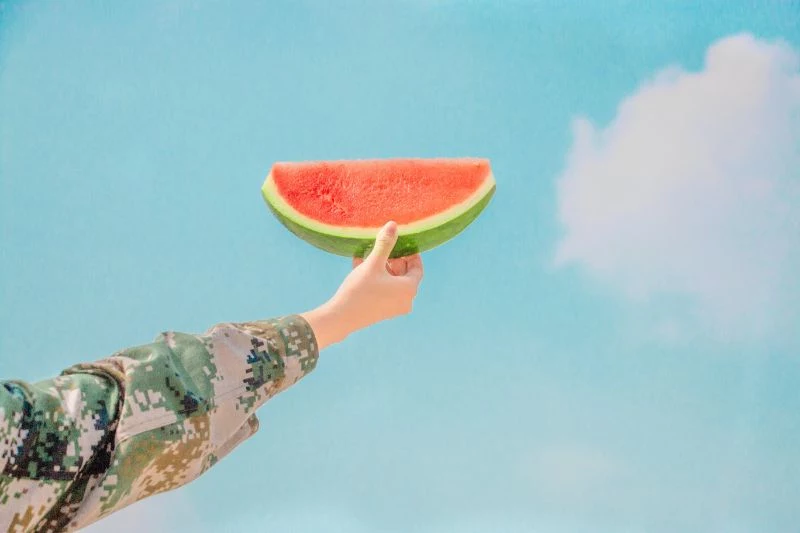
First, Understand the Golden Rule of Watermelons
Before we even get to the bin, you need to know this critical fact: a watermelon does not ripen after it’s been picked. It’s not like a banana or an avocado that you can let soften on your counter. Once a watermelon is cut from the vine, that’s it. The sweetness and flavor it has at that moment are all it will ever have. The show is over.
So, your job isn’t to predict the future. Your job is to play detective and figure out if the farmer harvested it at its absolute peak. Ripeness in a watermelon is all about high water content (it’s over 90% water, after all) and maximum sugar. If it’s picked too early, it’ll be watery but bland. Too late, and the flesh gets mealy and gross. All the tips below are just ways to find the evidence that the timing was perfect.
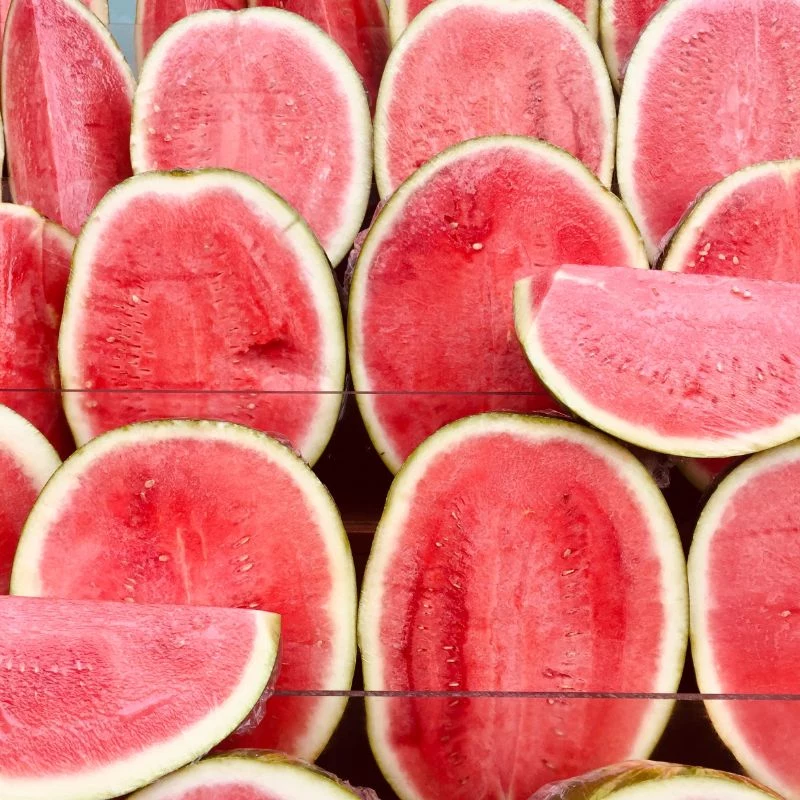
The Pro’s Inspection Method: More Than Just a Thump
Forget just knocking on a few and hoping for the best. A real inspection takes maybe a minute, but it gives you a complete picture. Here’s how to do it.
Step 1: Use Your Eyes (This is 80% of the battle)
Your eyes give you the most clues, as long as you know what you’re looking for. A great watermelon rarely looks flawless; the interesting marks and colors tell its story.
The Field Spot is Everything
This is the single most reliable sign, and for me, it’s non-negotiable. It’s the pale patch on one side where the melon rested on the ground. The color of this spot tells you everything. Don’t be shy about turning melons over in the bin to find it!
- White or Pale Green Spot: Hard pass. This melon was picked way too soon. It will be bland, and you’ll be disappointed.
- Creamy Yellow Spot: Now we’re talking. This is the minimum color you should accept. It means the melon sat on the vine long enough to mature properly.
- Deep, Buttery Gold Spot: Jackpot! A rich, golden-yellow spot means that melon was left to soak up the sun and develop as much sugar as possible. This is the one you want to take home.
By the way, I learned this the hard way. I once got cocky and bought a gorgeous-looking melon for a family barbecue but ignored that the field spot was just a little too pale. It looked perfect otherwise! When I cut it open… embarrassing silence. It was watery and tasteless. That taught me to never, ever compromise on the field spot.
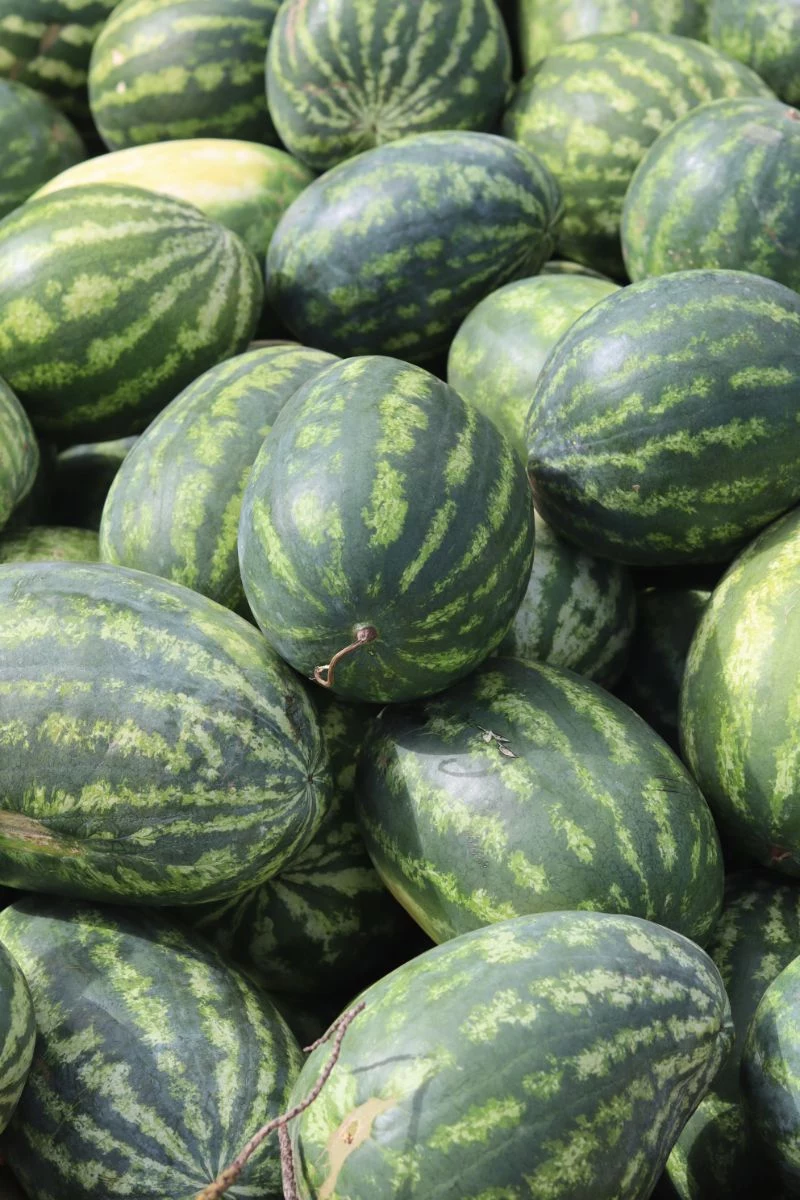
Look for a Dull, Not Shiny, Rind
This one feels counterintuitive, but a super shiny rind is usually a sign of an underripe melon. As a watermelon matures, its surface loses that glossy sheen and becomes duller, almost like it has a matte finish. Look for a melon that’s dark green (for common round varieties) and looks a bit worn, not one that’s glistening like a freshly waxed car.
Check for Sugar Webbing
See those coarse, brownish, web-like lines on the rind? Some people think they’re flaws, but I see them as a big green flag. These “spider webs” are marks from pollination. The more bees that visited the flower, the more webbing you’ll see. More pollination often leads to a sweeter fruit. I always give a heavily webbed melon a closer look.
Shape and Bumps
Whether you’re grabbing a round or an oval one, look for symmetry. Avoid melons with weird lumps, irregular bumps, or flat sides (other than the field spot, of course). These deformities can mean the melon got inconsistent sun or water, which can lead to dry, mealy patches inside.
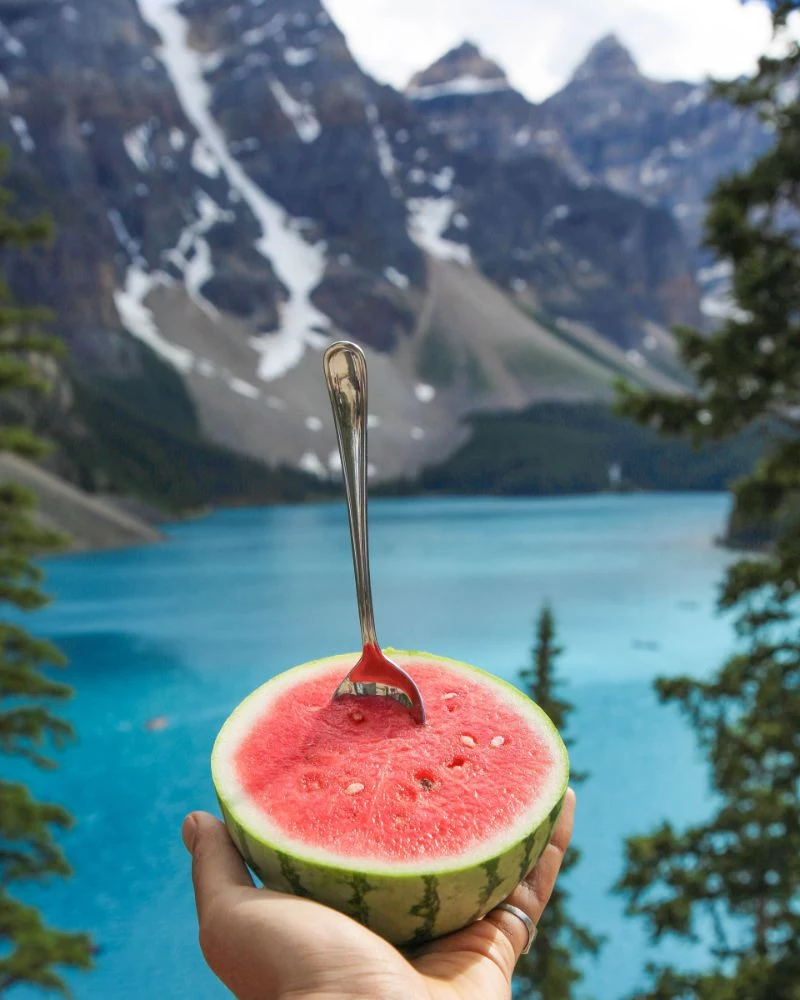
Step 2: Pick It Up and Feel the Difference
After you’ve given it a good look, it’s time to use your hands.
Heavy for Its Size
This is simple but incredibly effective. A ripe melon is full of water, which means it should feel heavy. Pick up the melon you’re considering. Now, pick up another one of the same size. One will almost always feel heavier. Choose that one. A melon that feels light for its size is likely dehydrated or underripe.
A Hard Rind is a Good Rind
Run your hand over the whole surface. It should be firm all over. If you find any soft spots, put it down immediately. A soft spot is a bruise that’s starting to rot, and it can ruin the whole melon from the inside.
Step 3: The Famous (and Misunderstood) Thump Test
Ah, the thump test. Everyone does it, but most people are faking it because they don’t know what they’re listening for. Here’s a little exercise to tune your ear:

Next time you’re at the store, find a melon with a bright white field spot (an underripe one) and give it a solid thump with your knuckle. It will make a high-pitched, solid “plink” sound. Now, find one with a deep golden spot and thump it. Hear that? It’s a deep, hollow “thump, thump” sound, like a bass drum. That’s the difference you’re listening for. An overripe, mealy melon will just make a dull “thud” with no echo at all.
Busting a Common Watermelon Myth
What about that little dried-up brown tendril or stem at the end? You’ve probably heard someone say to look for a dry one. Honestly, it’s not a reliable indicator for the average shopper. That tendril can dry out long before the melon is actually picked, or it can be knocked off during shipping. Focusing on the field spot, weight, and sound is a much more dependable strategy.
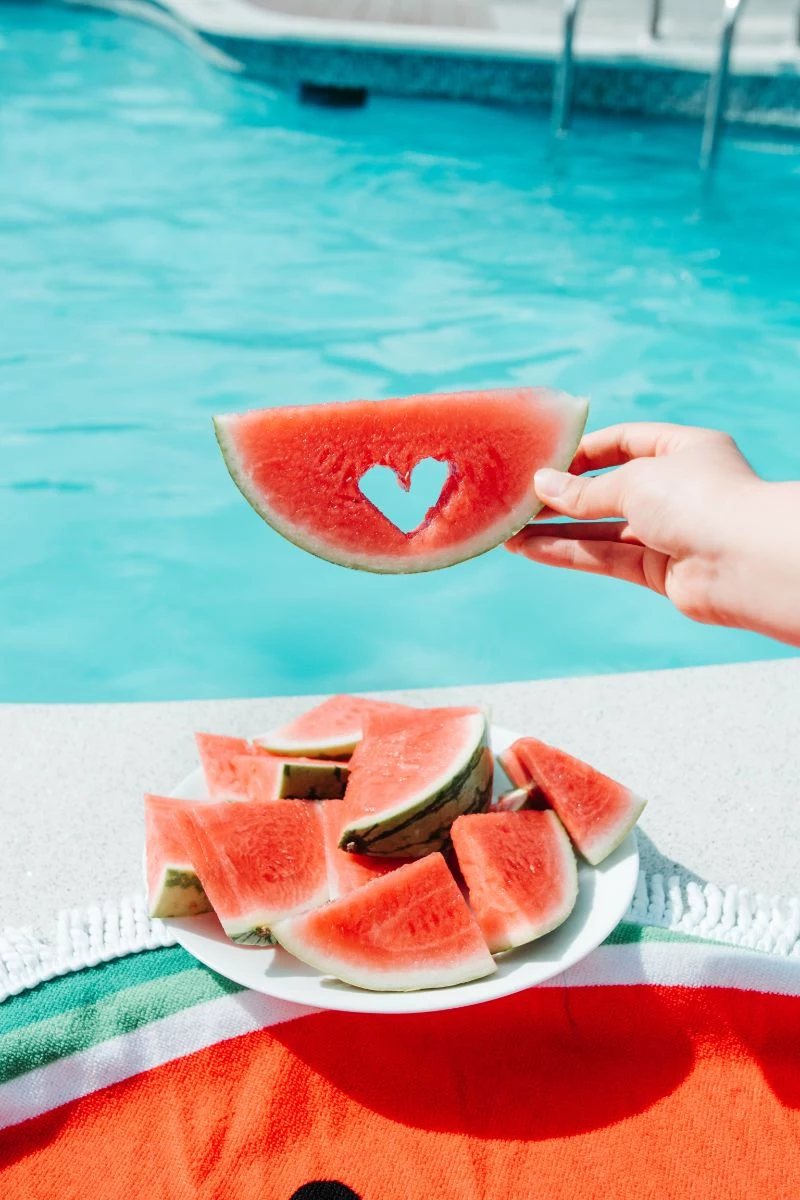
The Pro-Level Tie-Breaker
So what if you find two melons that both seem perfect? They’ve got golden spots, they’re heavy, and they thump just right. What’s the final deciding factor? For me, it comes down to the sugar webbing. If one has more of that coarse, web-like scarring than the other, I’ll take that one. It’s often a sign of an extra-sweet interior.
Quick Cheat Sheet for the Store
I know that’s a lot to remember. If you’re standing in front of a giant bin and need a quick refresher, here’s what you need. Just look for these four things:
- Golden Spot: A deep, buttery yellow field spot. No exceptions!
- Dull Sheen: Look for a dull, not shiny, surface.
- Heavy Weight: It should feel heavier than other melons of the same size.
- Deep Thump: It should have a low-pitched, hollow sound.
What About Pre-Cut Watermelon?
Let’s be real, sometimes you just want the convenience of pre-cut chunks. No shame in that! But you still need to be a savvy shopper. When you’re looking at those plastic containers, here’s what to check for:
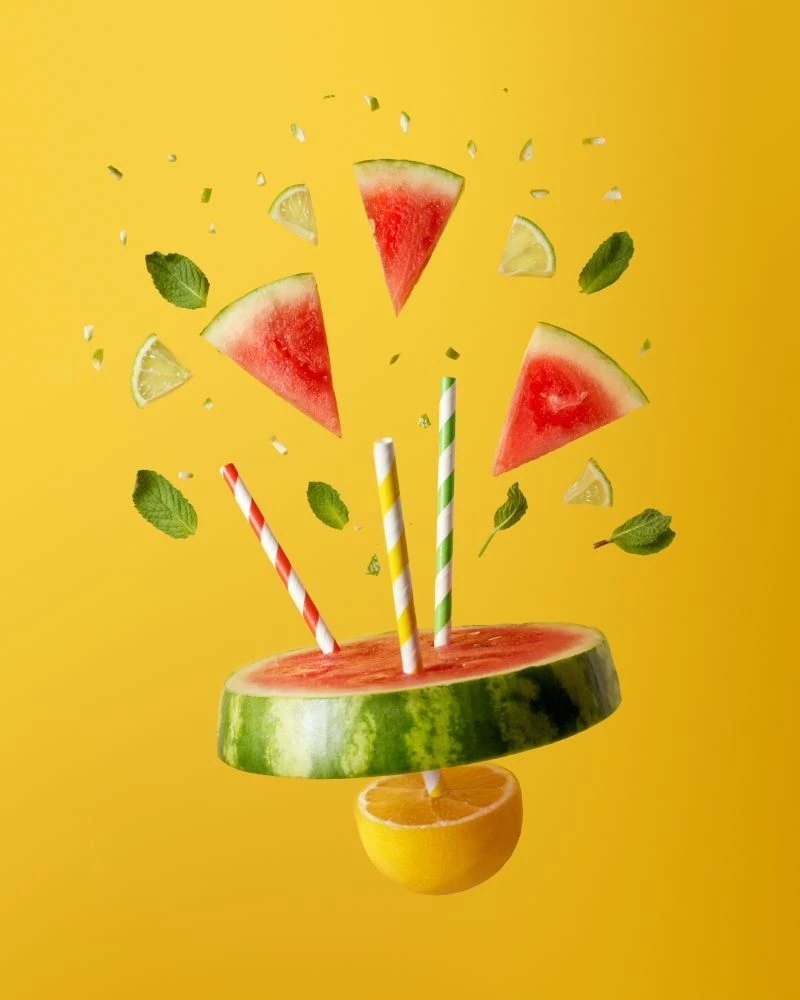
- Vibrant Color: The flesh should be a deep, rich red or pink. Avoid any pieces that look pale or have a lot of white streaks running through them.
- Look for Firmness: The edges of the cut pieces should look crisp and solid. If they look watery, mushy, or are starting to break down, move on.
- Check the Seeds (or Sockets): In a seeded melon, the seeds should be dark brown or black. In a seedless one, the little white seed sockets should be small and not overly prominent.
- No Puddles: There shouldn’t be a big pool of separated, watery liquid at the bottom of the container. That’s a sign it’s getting old and mealy.
When to Buy and What to Pay
Seasonality is huge. The best time to buy watermelon is, unsurprisingly, during its peak season in the summer. That’s when you’ll find the best flavor, quality, and prices. In-season, you can expect to pay around $0.40 to $0.70 per pound at a typical grocery store. Off-season, like in the early spring, that price can easily jump to over a dollar a pound, and the quality is often a gamble.
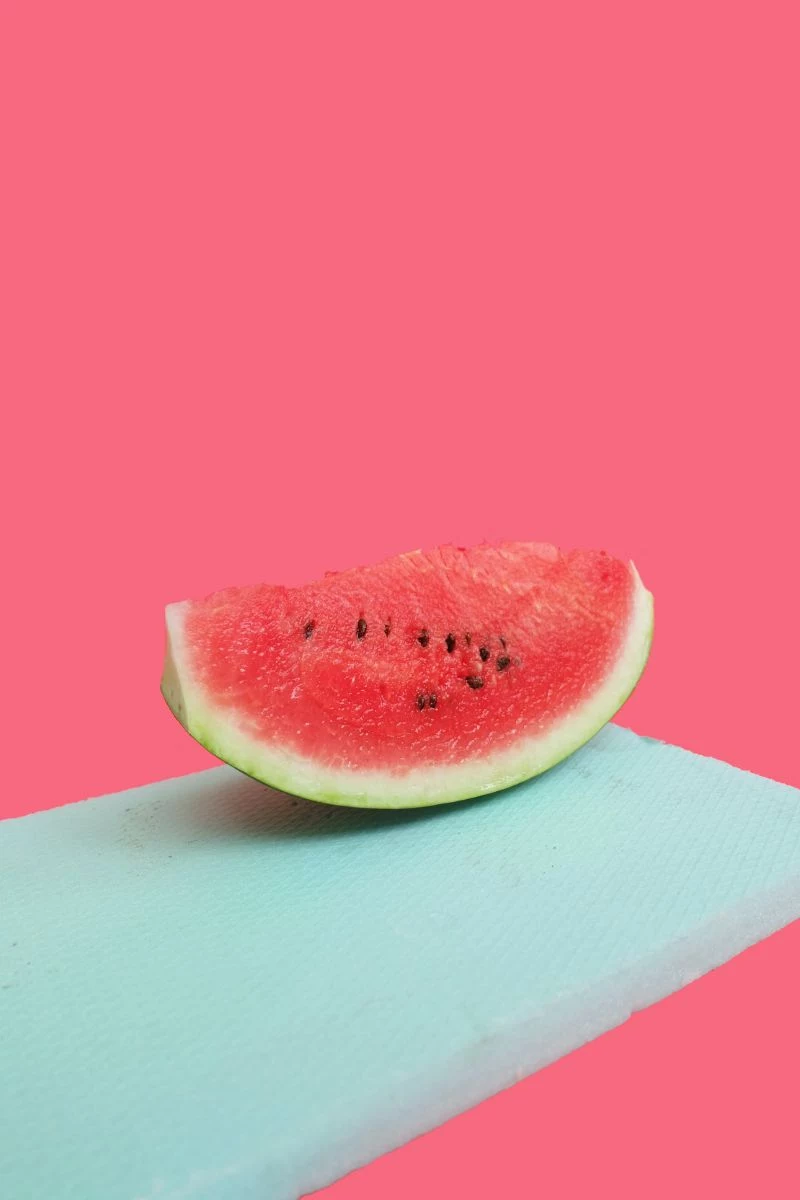
If you’re at a farmers market, talk to the grower! Their reputation is on the line. Ask specific questions like, “Which of your varieties is eating best this week?” or “Did these get a lot of good sun right before you picked them?” They’ll give you the inside scoop.
Bringing It Home: Storage and Safety
Once you’ve got your prize, there’s one last crucial step.
Heads up! You absolutely MUST wash the outside of your watermelon before cutting it. The rind has been on the ground, in a truck, and handled by who knows how many people. It can have bacteria on it. When your knife slices through an unwashed rind, it drags all that gunk directly into the flesh you’re about to eat. Just give it a good scrub under cool running water and pat it dry.
An uncut melon can sit on your counter for about a week. But once it’s cut, it has to be refrigerated. To keep it fresh, press plastic wrap directly against the cut surface to keep it from drying out, or store cubes in an airtight container. It’ll last for 3 to 5 days in the fridge.
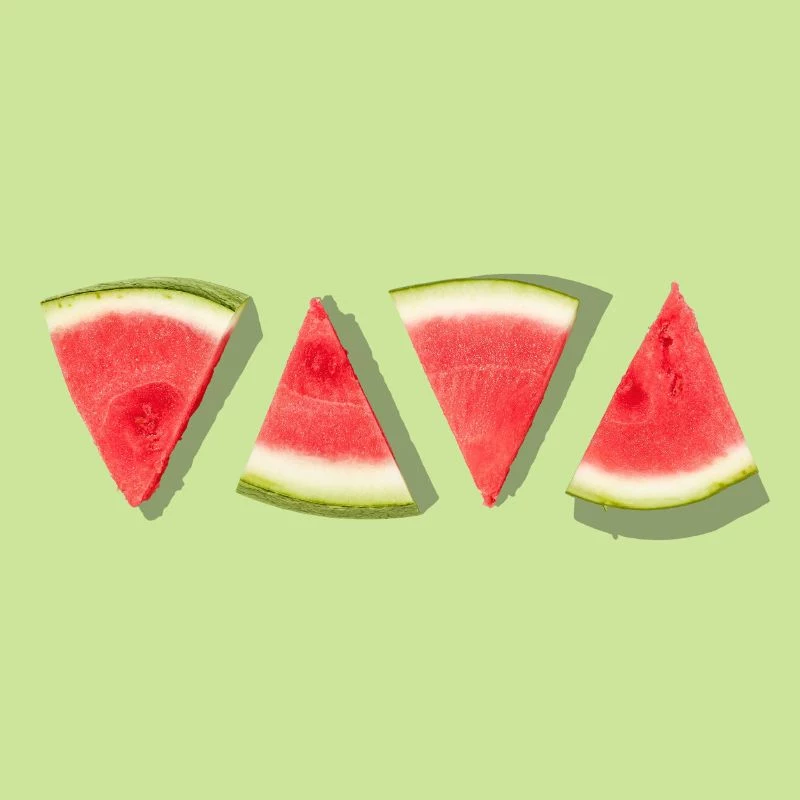
And hey, if you do end up with a less-than-perfect melon? Don’t toss it! If it’s a bit underripe, cube it for salads or infuse it in water. If it’s a little mealy but still sweet, it’s perfect for blending into smoothies, juices, or a cold gazpacho. No one will ever know.
Inspirational Gallery
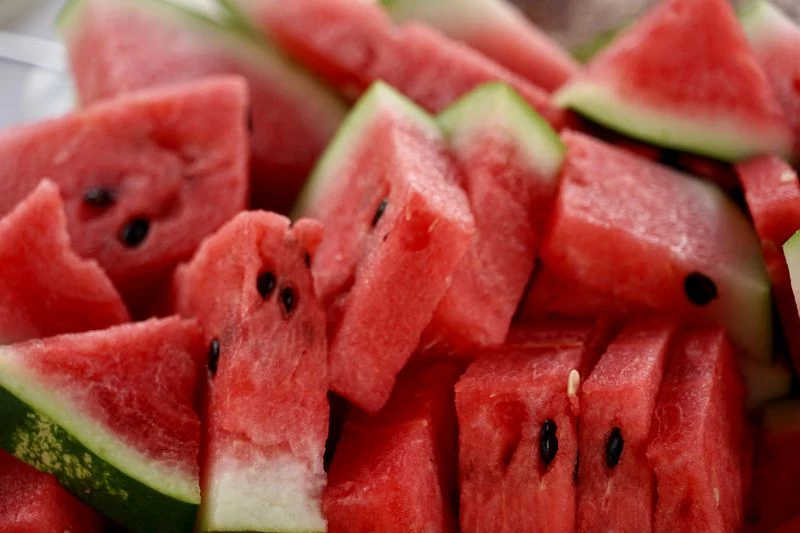

A truly sweet watermelon typically measures between 10 and 12 on the Brix scale, a scientific measure of sugar content in a liquid.
While you can’t carry a refractometer to the store, this scale explains why a heavy, dense-feeling melon is a good sign. The higher sugar content (and therefore better flavor) literally makes the fruit’s flesh heavier than a less-ripe melon of the same size, which has a higher plain water content. Your
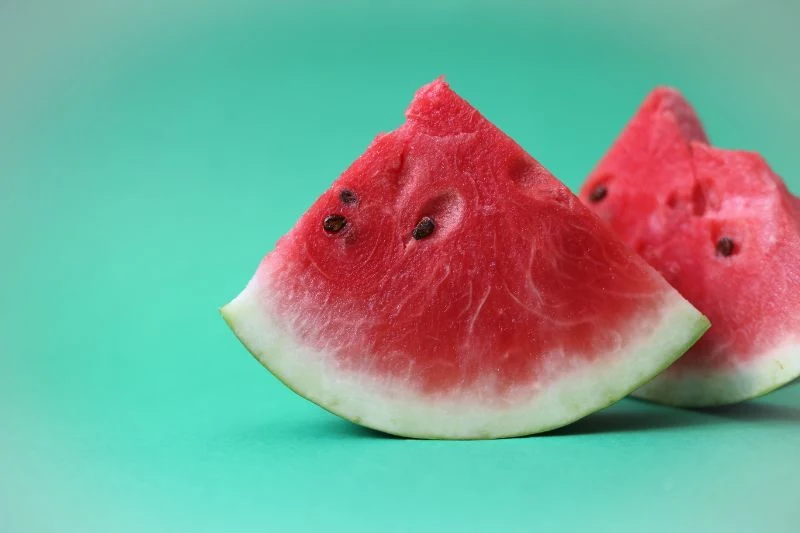
What about buying pre-cut watermelon? Is it ever a good idea?
It’s tempting, but proceed with caution. Pre-cut melon eliminates the guesswork, but you’re trading that for a shorter shelf life and potential flavor loss. If you do buy it, look for flesh that is vibrant and deeply colored, not pale or watery. The edges of the pieces should be sharp and crisp, not rounded or mushy. Avoid any packages with pooled liquid at the bottom—that’s a sign it’s past its prime.
Look beyond the standard striped melon! Farmer’s markets are a treasure trove for unique varieties. Keep an eye out for the Yellow Doll, a small melon with shockingly sweet, canary-yellow flesh. Another heirloom favorite is the Moon and Stars, named for its dark green rind speckled with a large yellow










